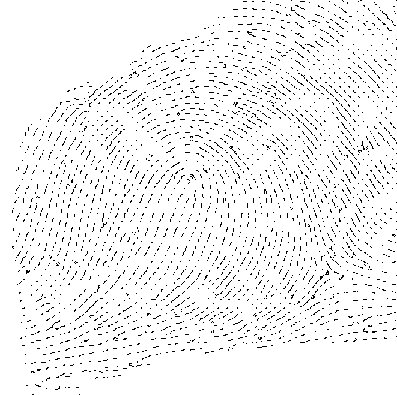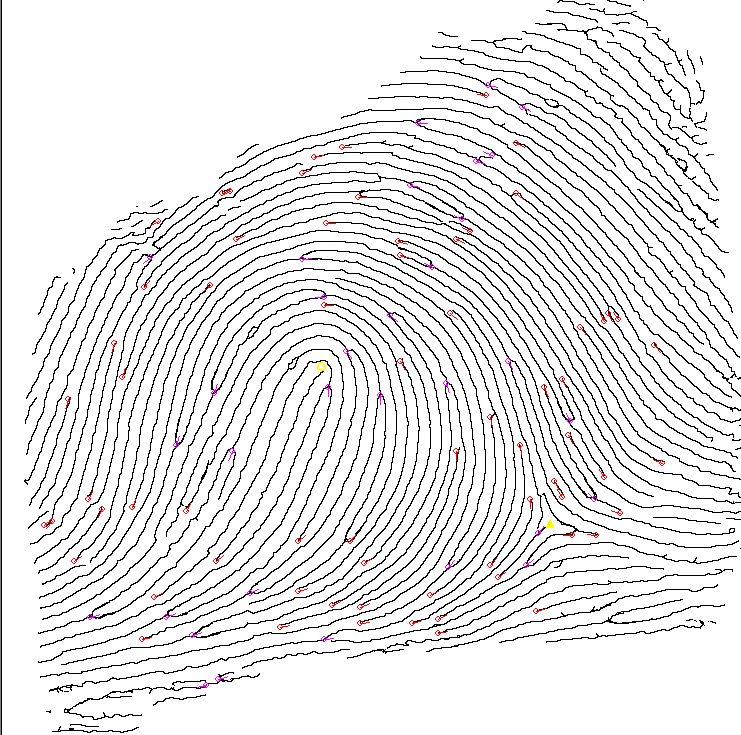|
a thumbnail explanation of terms coined by David Ashbaugh |
|||||
|
UPDATED
15 January 2005
1. With appropriate training (SWGFAST training guidelines)Analysis is objective. Comparison uses objective observations. The final identification decision is subjective and is reached when sufficient quality (clarity) and quantity of corresponding Level 1, 2 and 3 friction ridge details are present. The quality (clarity) and quantity of details necessary to effect the identification can vary based on training, experience and ability of the Latent Print (LP) Examiner. Even though each latent print can have a different Quality (clarity) and Quantity of Level 1, 2 and 3 details... LP Examiners with similar Training, Experience and Ability should be able to identify the same latent and inked prints. LP Examiners do not JUST count Galton detail points. Whether they know it or not, every LP Examiner looks also at Level 3 details. A skeleton of fingerprint ridge detail contains 100% of the Level 2 detail, yet no LP Examiner would work with just that Level 2 detail... we use Level 3 all the time, even when it carries relatively little weight in the decision process because of a large quantity of Level 2 details... we never use JUST Level 2. WE DO NOT JUST COUNT POINTS. As Dave Ashbaugh often says, it is NOT the points, but what's in between the points that matters. Some individual examiners may have a self-imposed 8-point rule, etc... and some agencies may have a point rule for quality assurance (QA) purposes, but nobody is JUST counting points to effect positive identifications. There is NO scientific basis for requiring a minimum number of matching features between two impressions to effect a positive identification. All statistical models attempted in the past 100 years use only Level 1 and 2 details... AFIS (a type of statistical model) uses Level 1 and 2 details... None of these models comes close to encompassing the plethora of Level 1, 2 and (especially) 3 detail we use in the identification decision process. If we just counted points, LP Examiners could make their AFIS hit latent print positive ID's using just ridge detail skeletons of all the candidate inked prints. LP Examiners do not do that. When LP Examiners speak of Galton points (Level 2 details) in court, it is because Galton points are a simplistic manner to demonstrate features the layperson and court more readily understand. It does not mean that is all we use to effect an identification. When LP Examiners speak of minimum numbers of matching Galton details required to effect an identification, they are really speaking of self-imposed or agency QA guidelines. LP Examiners do NOT just count points and LP Examiners need to understand and be able to explain the ACE-V process. All
LP Examiners should know David Ashbaugh's Ridgeology booklet's
contents...
including ACE-V and the scientific process LP
Examiners
are already using (but may not know how to explain).
Level
1 includes the general ridge
flow
and pattern configuration. Level 1 detail is not sufficient for
individualization,
but can be used for exclusion. Level 1 detail may include
information
enabling orientation, core and delta location, and distinction of
finger
versus palm.
Level
2 detail includes formations, defined as a ridge ending,
bifurcation,
dot, or combinations thereof. The relationship of Level 2
detail
enables individualization.
Level
3 detail includes all dimensional attributes of a ridge,
such
as ridge path deviation, width, shape, pores, edge contour, incipient
ridges,
breaks, creases, scars and other permanent details.
E-mail the Guy who wrote this page
|


